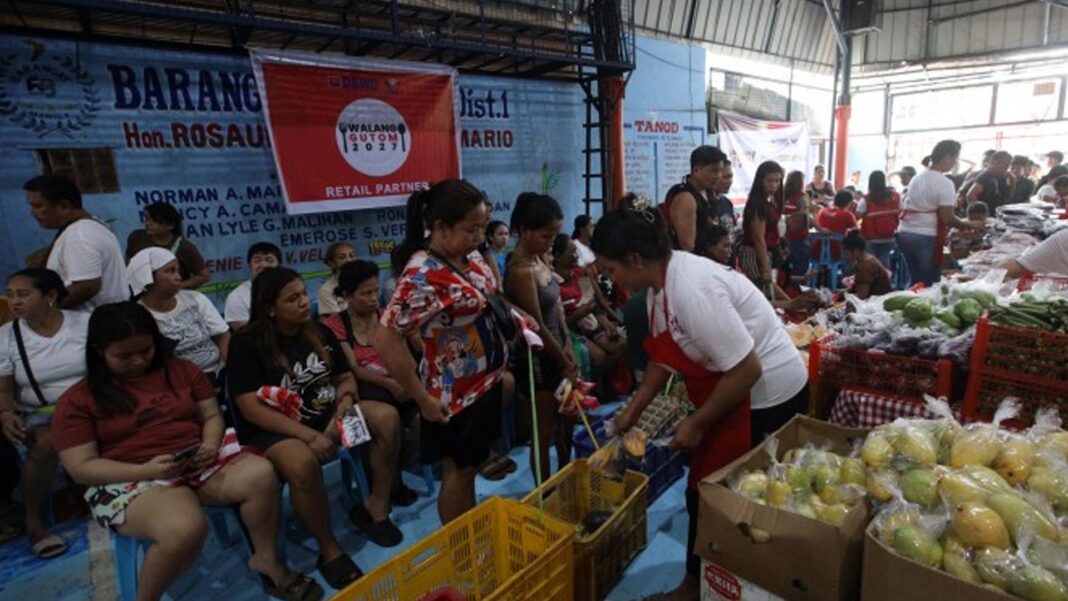The country’s poverty rate went down to 15.3 percent in 2023 from 18.1 percent in 2021 as government measures helped reduce the number of poor Filipinos.
The poverty incidence in 2023 was also better than the government’s target of 16 percent to 16.4 percent in the Philippine Development Plan 2023-2028.
Latest available data from the Philippine Statistics Authority showed that the number of poor Filipinos whose income is not sufficient to meet their basic food and non-food needs went down to 17.54 million from 19.99 million in 2021.
Poverty incidence among families also fell to 10.9 percent, or equivalent to 3 million poor families from 3.5 million families as of the end of 2021.
Poverty incidence in 10 basic sectors likewise declined in 2023 from 2021.
Ten of the 14 basic sectors identified in Republic Act 8425 or the Social Reform and Poverty Alleviation Act recorded a decline in the poverty incidence during the year.
The PSA said senior citizens, formal labor and migrant workers, and individuals residing in urban areas posted the lowest poverty incidence among the basic sectors in 2023 at 7.8 percent, 8.3 percent, and 10.3 percent, respectively.
In 2021, the poverty incidence for senior citizens and formal and labor migrant workers was higher at 10.2 percent, while that of urban residents was also higher at 11.6 percent.
PSA data showed that other sectors which recorded a decline in poverty incidence include youth (14.1 percent from 16.5 percent), persons aged 15 years and above with disability (14.1 percent from 17.2 percent), women (15.6 percent from 18.3 percent), and self-employed and unpaid family workers (16.1 percent from 18.5 percent).
Other sectors include children (23.4 percent from 26.3 percent), farmers (27 percent from 29.9 percent), and fisherfolk (27.4 percent from 30.2 percent).
The PSA said that for 2023, new to the list of basic sectors with estimates of poverty incidence is the indigenous peoples.
The poverty incidence for the sector was at 32.4 percent.
The Department of Economy, Planning, and Development (DEPDev), formerly known as the National Economic and Development Authority, said the decline in poverty incidence last year marked significant progress toward the Marcos administration’s goal of reducing poverty to a single-digit level by 2028.
DEPDev Secretary Arsenio Balisacan, however, assured that despite the significant progress, the government remained committed to implementing effective policies and initiatives that uplift the lives of Filipinos.
“As we welcome news of our progress, we remain steadfast in our efforts to ensure that our economic gains are truly felt by all Filipinos, rich and poor alike,” Balisacan earlier said.
Balisacan cited the need to boost agricultural productivity, invest massively to improve infrastructure and markets, effectively manage food prices through supply- and demand-side interventions, and strengthen targeted interventions to enhance health outcomes.
Single-digit poverty level
To further bring down the country’s poverty rate to a single-digit level, Rizal Commercial Banking Corporation chief economist Michael Ricafort cited the boost in economic growth and investing more on education.
“Since the Philippines remains one of the fastest growing economies, more inclusive economic growth and development of important to lift more people from poverty,” he said in a pre-State of the Nation Address interview.
“Education is one the biggest equalizers, with the biggest budget allocation in recent years, as an investment approach that would reap the greatest return for the Philippine economy and society, especially STEM (science, technology, engineering and mathematics) courses to make Filipinos more competitive worldwide.”
Ricafort said the use of best global technologies is also one of the biggest equalizers that would help further boost productivity in the local economy, especially in agriculture.
He said agriculture employs about 20 percent of the total workers but contributes less than 8 percent to the country’s gross domestic product.
“So it is important to narrow that gap to use the best technologies to increase agricultural output while reducing costs of production, thereby raising the incomes of farmers and other agricultural workers. This would help lift more people from poverty,” Ricafort said.
Department of Finance Secretary Ralph Recto is optimistic that the government will achieve its single-digit poverty level before the end of the Marcos administration.
“I am confident we will be able to uplift more Filipino lives by growing the economy and creating more and better jobs. Government will continue investing in both physical, digital infrastructure, electrification and human resource development, education, skills training, and health,” Recto said. (PNA)


